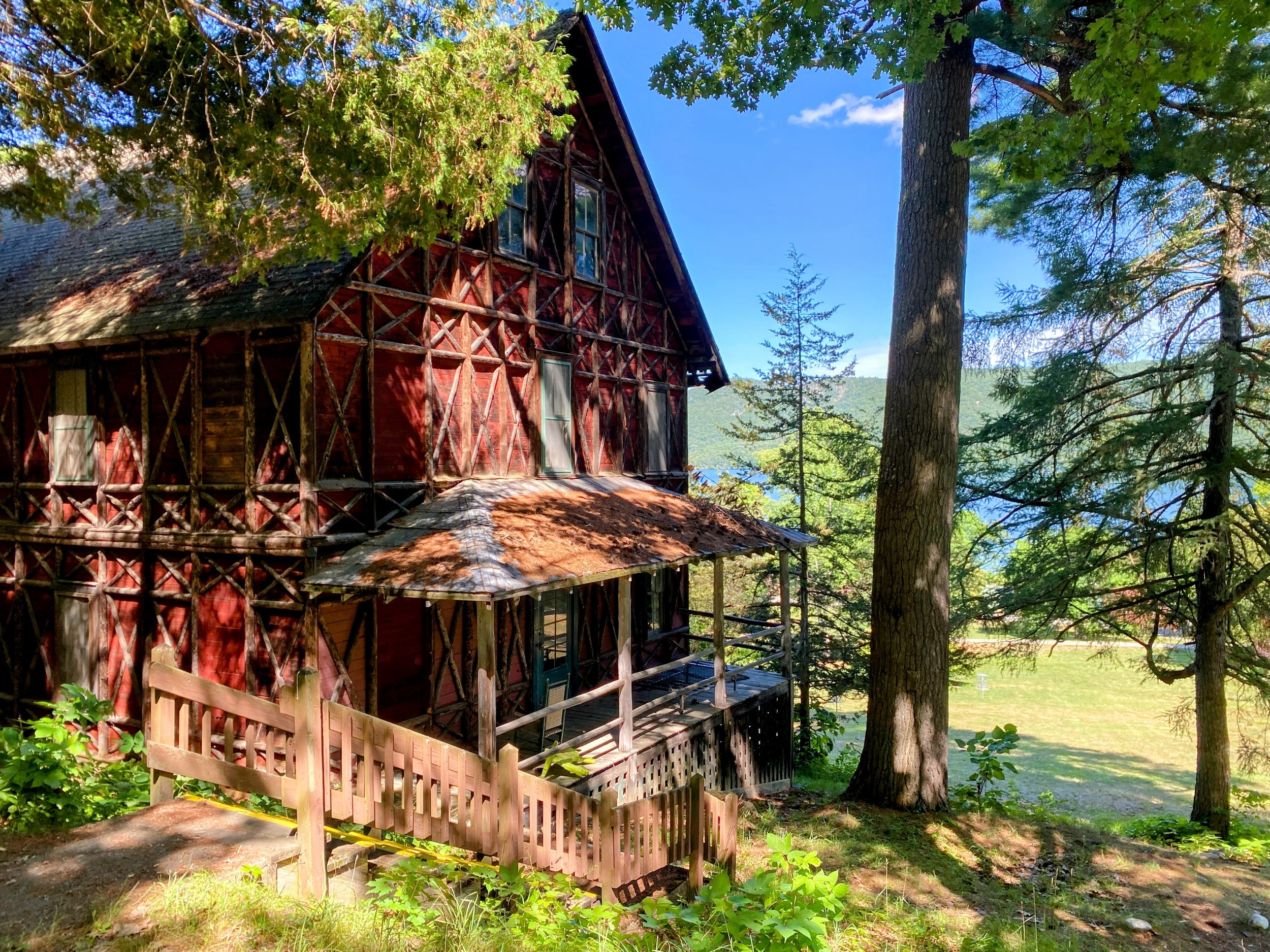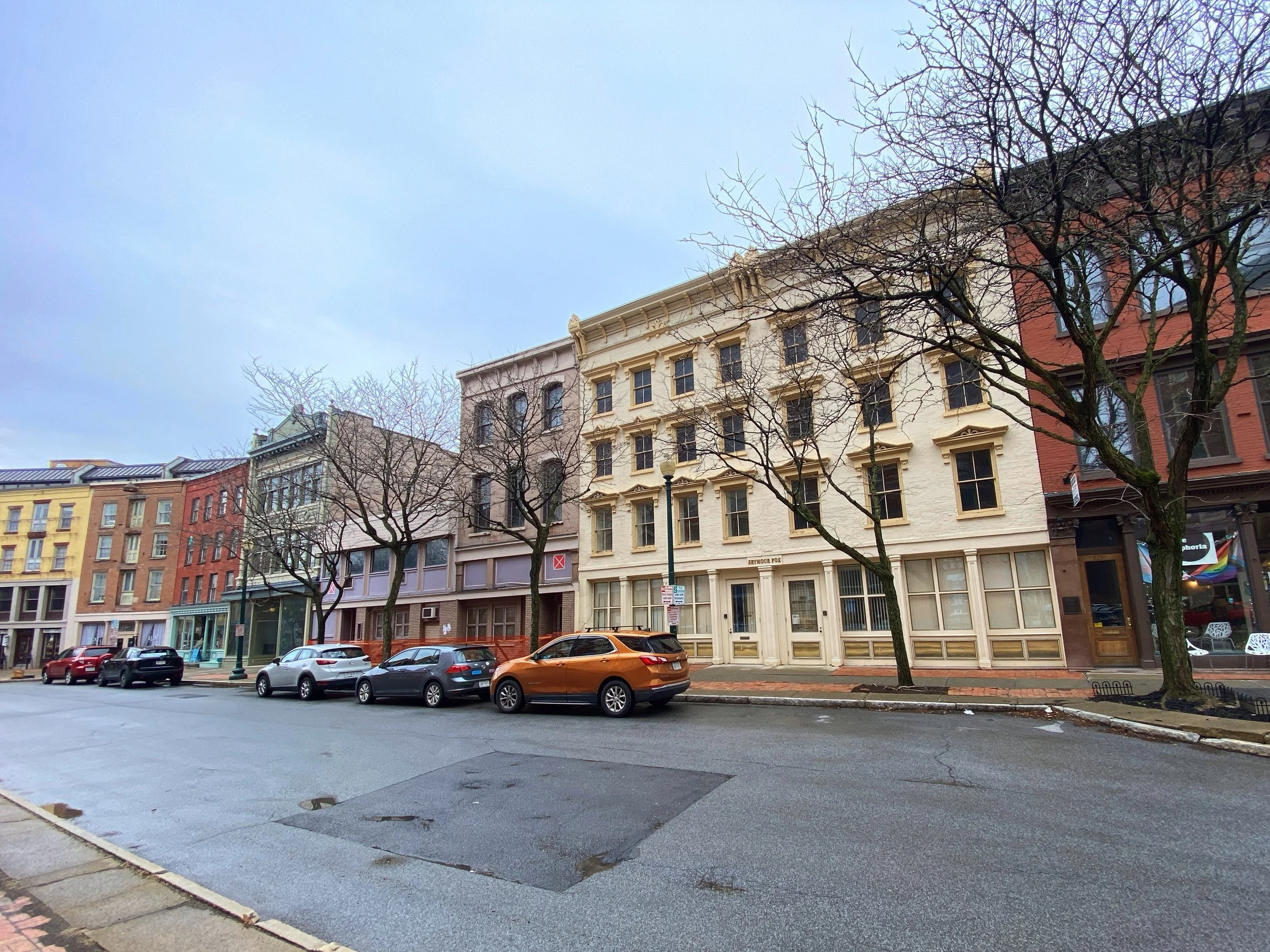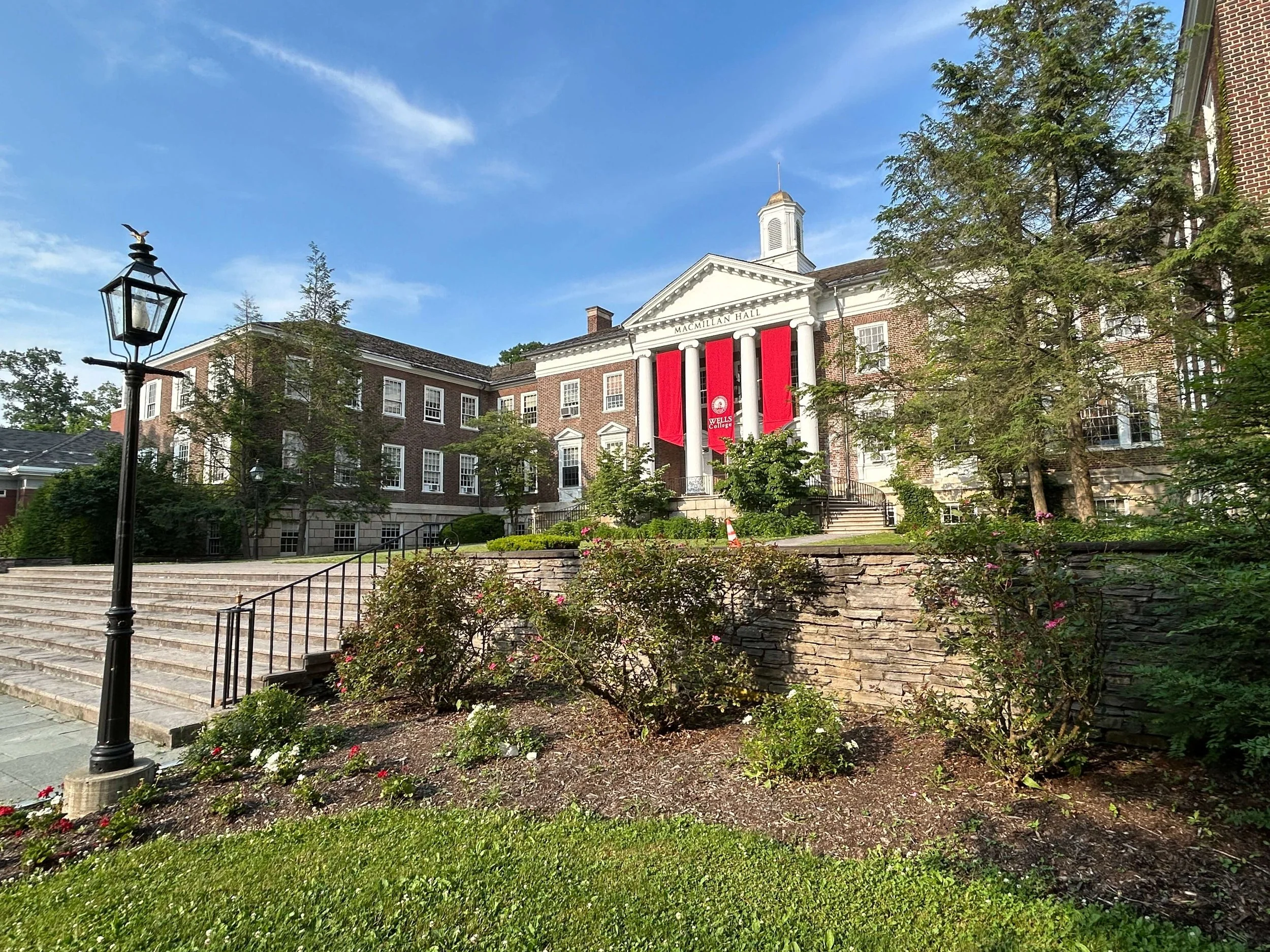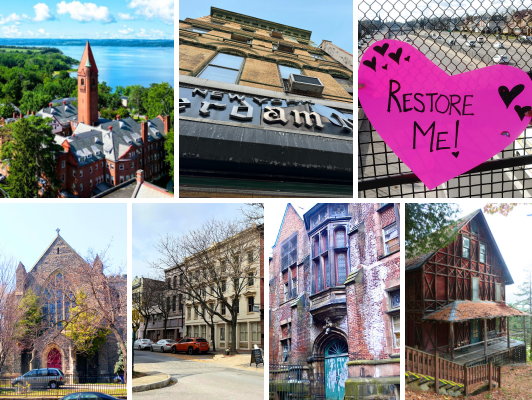On August 21, League Director of Preservation Caitlin Meives joined the Eastside Parkways Coalition in Buffalo to share more information with the community about the League’s designation of the former Humboldt Parkways as one of our current Seven to Save. WGRZ News Channel 2 was there to learn more…
Read MorePreservation League of NYS presentation: 2025-2026 Seven to Save statewide distinction for the Full Restoration of Humboldt Parkway.
When: Thursday, August 21, 6:30-7:30 p.m. Where: Delavan Grider Community Center, 877 East Delavan Avenue, Buffalo, NY 14215
Read More“We are thrilled to receive this important recognition for our historic Hepbron Hall,” said Walt Lender Silver Bay YMCA’s VP of Development and Government Relations. “The Silver Bay community holds this building dear not only for its unique architecture and prominence on the campus but also for the memories and experiences of those who have lodged here throughout its history.”
Read MoreCheck out this 6-minute documentary to learn more about the Seven to Save-listed New York Amsterdam News!
Read More“The League is thrilled to recognize the historic headquarters of the New York Amsterdam News on our 2025-2026 Seven to Save list,” said Caitlin Meives, Director of Preservation for the Preservation League of NYS. “The storied Black-owned newspaper, one of the oldest and most influential in the country, has been in their Harlem location since 1936, and it vital that this history be protected and celebrated.”
Read MoreSeven to Save Spotlight: Lower River Street Buildings in Troy. 213-223 River Street are vacant, but make up part of an intact historic streetscape in Troy’s bustling downtown — buildings on both sides are in active use.
Read MoreAlbany’s Guild House, a former immigrant settlement house situated behind the Cathedral of All Saints, has been added to the League’s 2025-2026 Seven to Save list. The building has been vacant for decades, but renewed efforts by local leaders hope to bring it back to active use to serve it’s original purpose of being a center for community support.
Read MoreAfter suddenly closing in 2024, local stakeholders banded together to advocate for Wells College. The League is pleased to join this group by including the campus on our 2025-2026 Seven to Save list.
“Our hope is that by recognizing the campus as a Seven to Save, the Preservation League can help PACNY bring together stakeholders to find a path forward through consensus,” said PACNY President Andrew Roblee.
Read MoreThe Preservation League of NYS is thrilled to announce its biennial listing of the most at-risk historic sites around the state. The 2025-2026 Seven to Save list includes buildings and landscapes, represents communities both urban and rural, and showcases many eras of our state’s history. The listings themselves are both singular and representative — illustrating pervasive issues impacting not just these sites, but sites like them across the state and beyond.
Read MoreBy the time some historic places end up on the Seven to Save list they have suffered from years of vacancy and/or significant disrepair. Our final theme in this year's anniversary retrospective will highlight three such listings that have since gone on to have incredible transformations: the former Eastman Dental Dispensary in Rochester, the former TWA Flight Center in Queens, and Bent’s Opera House in Medina.
Read MoreMain Streets serve as the physical, economic, and cultural center of a community, home to municipal offices, banks, local businesses, and community gathering spaces. They can be one block long or ten (or more!); rural, suburban, or urban; with simple single story wood frame buildings or high style multi-story masonry buildings, and everything in between. Over the past 25 years, many Main Streets across the state have landed on our Seven to Save list – from Downtown State Street in Schenectady back in 2000 to the listing of Downtown Oneonta’s Historic District just last year.
Read MoreBy our count, almost 20 neighborhoods have been included as Seven to Saves over the years – not counting Main Streets! Two threats tend to loom largest over Seven to Save communities: development pressure and deterioration. Gentrification, rising housing costs, and overdevelopment can push longtime residents out of their homes. Systemic disinvestment and lack of resources can make it difficult for residents to take care of their historic homes. Tools like historic district designation, Homeowner historic tax credits, and a push for affordable housing in historic neighborhoods helps to build sustainable communities. Neighborhood groups, local preservation and community-based organizations, and neighborhood residents (whether they be homeowners or renters) are the driving forces in preserving these kinds of sustainable communities.
Read MoreIn many ways, New York is defined by its relationship to water. New York City and Long Island are surrounded by it. The Hudson River shoots north all the way into the Adirondacks. The Finger Lakes are home to picturesque landscapes and thriving communities. Lakes Ontario and Erie form our western border. And of course, the Erie Canal is the reason New York is called the Empire State. Our coastal, river-, lake-, and canal-side communities are rich in history. But being on the water can also put historic structures at risk – from natural erosion and increased flooding caused by climate change to development pressure caused by increased real estate value.
Read MoreWith shifts in population, budget constraints, and older buildings no longer meeting contemporary needs, many educational buildings have been vacated and left to deteriorate without an immediate new use on the horizon. In some cases, the buildings are so large that finding a new use proves difficult. In others, districts outgrow their historic buildings and move on. Regardless of particular circumstances, educational buildings tend to be local landmarks, deeply connected to a community’s identity and sense of place. People often have a strong emotional connection to these places because they used them as a children, or members of their families did. Losing these places can be a major blow to a community.
Read MoreWaterways, roadways, railways, and airports – the architecture of how we get around can tell us a lot about the time in which it was constructed and how our communities have evolved and developed over the years. Whether purely utilitarian in its original conception or a grand statement of forward-looking aspirations, many great buildings and structures have fallen out of use and landed on our Seven to Save list. But just because something can no longer be used for its original purpose doesn’t mean it can’t still be useful.
Read MoreWhen highlighting underrepresented histories through a Seven to Save listing, it is key for the League to bolster the work already being done by local advocates. It is not necessarily our job to come in and declare a place important — local communities are able to decide that for themselves. Rather, the League can play an important role supporting and advocating alongside the people with roots in these places.
Read MoreSince we first began drawing attention to at-risk places with a Seven to Save designation, some places have been lost, some are still endangered, and others have gone on to be remarkable success stories. There are lessons to be learned in all three cases. For our anniversary year, we wanted to look at the program with a thematic retrospective – highlighting seven themes we’ve seen pop up in our listings over the past 25 years. Over the course of the year, we’ll be digging into our STS archive to highlight places across the state that help tell a broader story of preservation in New York. In this post we are teasing the themes we’re going to be looking at more deeply later in the year. We hope you’ll follow along!
Read MorePart of the League’s 2023 Seven to Save artist commissions, this pair of carvings by Fitzhugh Karol was inspired by the roofline of James Brooks’ studio. Together, these two carved cedars, cut from the forest in Springs, are representative of the collaborative creative life of James Brooks and Charlotte Park.
Read MoreHistoric preservation can serve as an economic life raft for upstate cities like Oneonta, but the public perception of preservation can be a challenge. As a way to celebrate the historic district, the League commissioned local artist Emily Falco to create a site-specific sidewalk mural strategically located in front of the Greater Oneonta Historical Society.
Read MoreThe Preservation League was saddened to learn of the loss of the former Kenwood Convent, also known as the former Academy of the Sacred Heart, in Albany. In 2010, shortly after the building was vacated, the League listed the building on our Seven to Save list; our colleagues at the Historic Albany Foundation likewise included it on their Endangered Historic Resources List. This beautiful campus was rich in both history and frustrations: architecturally distinctive, historically fascinating, but subject to a series of failed development projects in recent years. The site was left vacant and vulnerable for over a decade. On March 23, despite the valiant efforts of first responders, it was lost to a terrible fire. Thumbnail image: Jim Franco for the Times Union
Read More



















